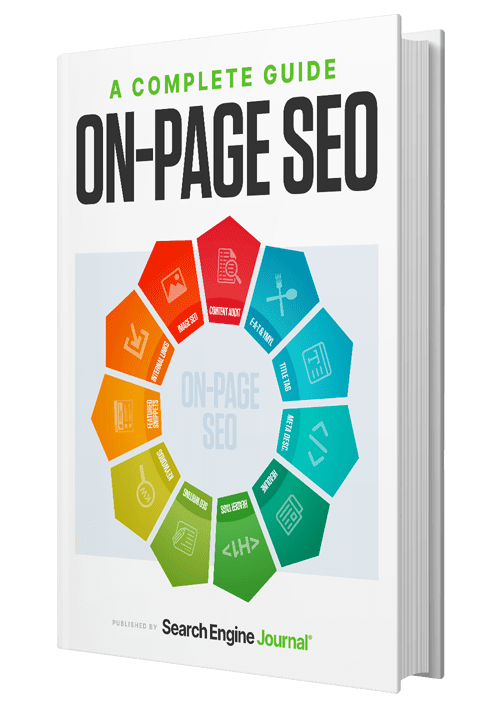
The Ultimate Guide to Mastering the Essentials of On-Page SEO Optimization
In the digital landscape, mastering The Essentials of On-Page SEO Optimization is paramount for businesses and individuals looking to enhance their online visibility and reach. Understanding the intricacies of on-page SEO optimization is key to unlocking higher search engine rankings, driving organic traffic, and ultimately achieving online success. This comprehensive guide is designed to equip you with the knowledge and tools necessary to navigate the ever-evolving world of SEO, ensuring that your website is optimized to its fullest potential. Whether you’re a seasoned marketer or a newcomer to the realm of search engine optimization, this guide will provide you with actionable insights and strategies to help you maximize your on-page SEO efforts and propel your online presence to new heights.
Keyword research is a crucial aspect of on-page SEO optimization as it helps you understand what terms your target audience is using to search for information online. By identifying the right keywords, you can tailor your content to match these search queries, increasing the chances of your website ranking higher in search engine results pages (SERPs). This, in turn, drives more organic traffic to your site and boosts your online visibility.
Effective keyword research involves finding the balance between high search volume and low competition keywords that are relevant to your business or niche. By strategically incorporating these keywords into your website content, meta tags, and headers, you signal to search engines that your site is a valuable resource for users searching for information related to those keywords. This optimization technique not only improves your site’s search engine ranking but also enhances user experience by providing relevant and valuable content that matches their search intent. Ultimately, keyword research is the cornerstone of successful on-page SEO optimization and plays a vital role in driving targeted traffic to your website.
Meta tags are an essential component of on-page SEO optimization that can significantly impact your website’s visibility and ranking on search engines. These tags provide search engines with valuable information about your webpage’s content, helping them understand its relevance to users’ search queries. The two most important meta tags are the meta title and meta description, which appear in search engine results pages and influence click-through rates.
The meta title is a concise and accurate description of your webpage’s content, typically limited to 60 characters. It should include relevant keywords that reflect the main topic of the page to attract users’ attention. The meta description, on the other hand, is a brief summary of the webpage’s content, usually limited to 160 characters. It should provide a compelling overview of what users can expect when they click on the link, prompting them to visit your site. By optimizing these meta tags with relevant keywords and compelling descriptions, you can improve your website’s visibility and attract more organic traffic from search engines.
Crafting compelling title tags is a crucial aspect of on-page SEO optimization. Title tags are the first thing users see in search engine results, so they need to be engaging and relevant to attract clicks. To optimize your title tags for SEO, it’s important to include relevant keywords that accurately reflect the content of your page. This helps search engines understand what your page is about and improves its chances of ranking higher in search results.
When creating title tags, it’s essential to keep them concise and to the point while still being descriptive and attention-grabbing. Including your target keywords towards the beginning of the title tag can also help improve its SEO performance. Additionally, using action-oriented language and creating a sense of urgency or curiosity can entice users to click on your link. By crafting compelling title tags that are optimized for SEO, you can increase the visibility of your web pages and attract more organic traffic to your site.
Optimizing header tags is a crucial aspect of on-page SEO optimization. Header tags, such as H1, H2, and H3, help search engines understand the structure and hierarchy of your content. By strategically using keywords in your header tags, you can signal to search engines what your page is about and improve your chances of ranking higher in search results.
To optimize header tags for SEO, make sure to include your target keywords in the headers that accurately reflect the content of the section. Use only one H1 tag per page to highlight the main topic or focus keyword of the page. Additionally, use H2 and H3 tags to break down the content into subtopics and include relevant keywords where appropriate. By following these best practices for optimizing header tags, you can enhance the readability and SEO performance of your website.
Creating SEO-friendly URL structures is a crucial aspect of on-page SEO optimization. A well-structured URL helps search engines understand the content of your webpage and can improve your website’s visibility in search results.
To create an SEO-friendly URL, keep it simple, concise, and relevant to the content of the page. Use keywords that accurately describe the topic of the page and avoid using unnecessary numbers, symbols, or special characters. It’s also important to use hyphens to separate words in the URL instead of underscores or spaces, as search engines prefer hyphens for readability.
By optimizing your URL structure, you can enhance your website’s SEO performance and make it easier for both search engines and users to navigate your site. Remember to update and revise your URLs regularly to ensure they remain relevant and aligned with your overall SEO strategy.
Internal linking is a crucial aspect of on-page SEO that can greatly enhance user experience on your website. By strategically linking relevant pages within your site, you can guide visitors to explore more content and navigate smoothly through your site. This not only improves the overall user experience but also helps search engines understand the structure of your website and the relevance of each page.
When incorporating internal links, it’s important to use descriptive anchor text that clearly conveys the topic of the linked page. This not only helps users understand where they will be directed but also signals to search engines the relationship between the linked pages. Additionally, internal linking can help distribute link equity throughout your site, boosting the authority of important pages and improving their chances of ranking higher in search engine results. By creating a logical and user-friendly internal linking structure, you can enhance the overall SEO performance of your website while providing valuable navigation cues for your visitors.
Leveraging image optimization is a crucial aspect of boosting your website’s SEO performance. By optimizing images, you can enhance your site’s user experience, improve loading times, and increase your chances of ranking higher in search engine results. To optimize images effectively for SEO, start by using descriptive file names and alt text that incorporate relevant keywords. Compressing images without compromising quality can also help reduce load times and boost overall site performance. Additionally, ensure that images are appropriately sized for different devices and utilize structured data markup to provide search engines with additional context about the images on your site. By implementing these image optimization strategies, you can improve your website’s visibility and drive more organic traffic.




